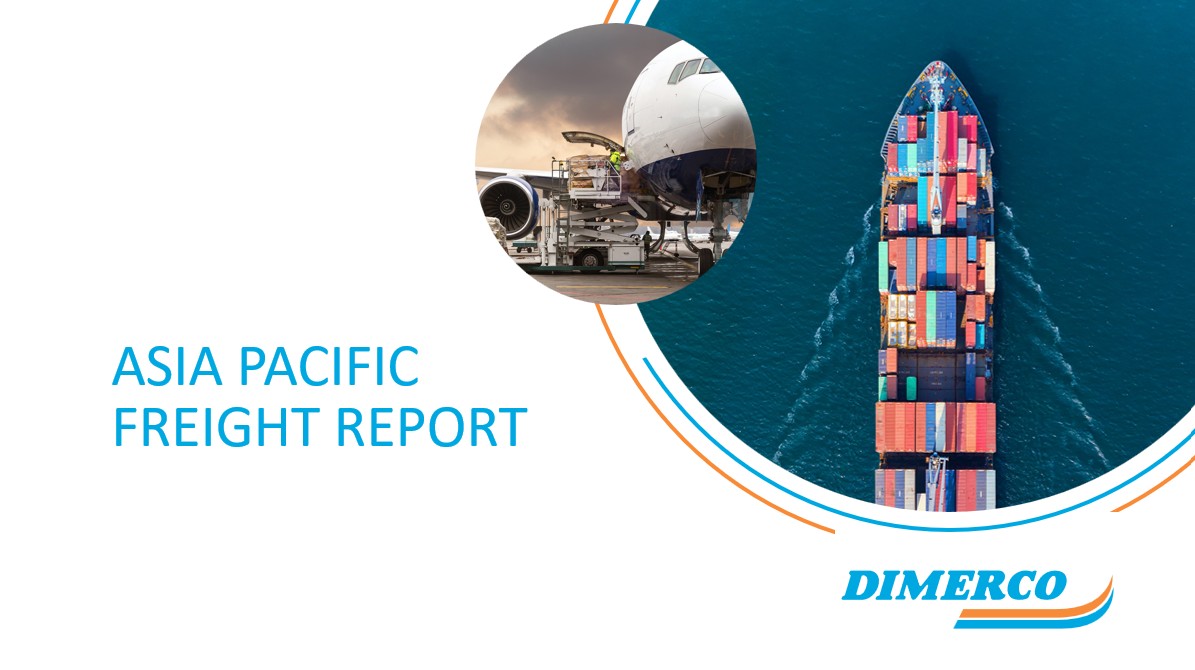Air freight Outlook
- US‑China air‑freight squeeze: Ongoing tariffs and the end of de minimis privileges have already triggered charter cancellations (late Apr–2 May) and more cuts by carriers CA, CK, CZ are likely, tightening an already scarce China‑to‑US capacity.
- eCommerce hit by T86 pause: Most platforms stopped T86 shipments from China to the US at April’s end, slashing overall e‑commerce volumes by ~50 % YoY; only Amazon FBA flows remain unaffected.
- Traffic re‑routes & demand shifts: Cancelled China‑US charters are being diverted to Mexico/Latin America, where demand is rising (e.g., Nuevo Laredo). Meanwhile, Southeast Asia and Taiwan exports hold steady under a 90‑day US tariff exemption.
Ocean Freight Outlook
- Blank sailings tighten capacity, lift rates: Drewry reports 72 of 713 planned voyages scrubbed for April 2025 (10 % on East‑West lanes); Transpacific eastbound bears the brunt with 56 % blanked. Reduced capacity helped nudge the World Container Index up 3 % to $2,192 per
- Geopolitics drives fragmentation: China’s fresh export curbs on critical minerals and new U.S. tariffs are fragmenting supply chains; NRF warns U.S. imports could fall 20 %, squeezing sectors such as energy‑transition tech and electronics.
- Cost headwinds for carriers: A proposed U.S. per‑port‑entry fee on China‑built vessels may force network re‑designs, underscoring the need for shippers and logistics teams to stay agile and continuously optimize routing and sourcing strategies.
In 2025, we’re definitely seeing global supply chains becoming more fragmented, largely due to ongoing geopolitical shifts. For example, China’s recent move to extend export restrictions on critical minerals adds another layer of complexity to international trade.
Along with the new US tariffs, there is a potential drop by 20% in import cargo levels, especially impacting industries like energy transition and electronics, based on a recent report by NRF. And now, with the proposed per-port-entry fee on Chinese-built vessels, shipping carriers will likely have to rethink how they deploy their services. The big takeaway here is that businesses need to stay agile—this shifting environment is pushing logistics teams to constantly optimize their operations to stay ahead of the game.
Regional Market Highlight
- Intra-Asia: Cargo volumes between Asian countries and European hub ports have increased. While April is typically not a peak season for this route, Taiwanese and Chinese carriers have added extra flights to accommodate the demand.
- North America: Summer air freight season in North America is approaching, bringing expanded routing options to tropical destinations and additional freighter schedules.
- Canada: Asian importers are opting for Canadian goods to bypass the ongoing CN-US trade tensions.
- Mexico: The recent reversal of tariffs has triggered a surge in freight orders, as companies rush to ship goods ahead of potential new trade policies. Many are also shifting manufacturing to Mexico to leverage favorable terms under the USMCA.
Download Report

If you prefer to download this report as a PDF, just complete the form. Otherwise, keep reading.
Since around April 20, charter flights from China to the US have been significantly reduced—many were either cancelled or re-routed. A lot of that capacity has shifted to destinations like Nuevo Laredo in Mexico and other parts of Latin America, where demand has actually gone up, especially out of Mexico.
For shipments to the US, a lot of shippers have hit pause. With the uncertainty around new tariffs between the US and China, many are holding back on placing new orders. But what’s interesting is that demand out of Southeast Asia and Taiwan has stayed relatively stable. That’s likely due to the 90-day tariff exemption granted by the US government, which is giving some breathing room to shippers in those regions.
VP, Global Sales and Marketing, Dimerco Express Group